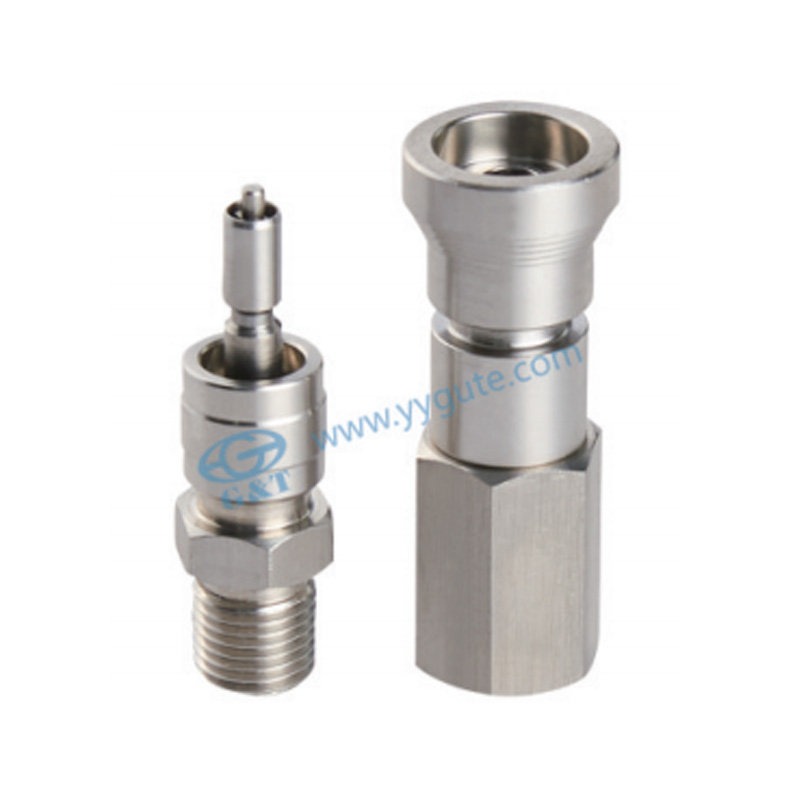How to solve common problems with quick disconnect coupling, such as leaks or difficulty connecting/disconnecting?
To solve common problems with Quick Disconnect Couplings like leaks or difficulty in connecting/disconnecting, follow these steps:
Ensure Proper Alignment: Use precision measuring tools such as dial indicators or laser alignment devices to verify alignment between the male and female components of the coupling. Check for parallelism and perpendicularity to ensure that the mating surfaces are properly aligned. Utilize shims or adjustable mounts to correct any misalignment detected. Consider dynamic factors such as vibration or thermal expansion that may affect alignment during operation, implementing measures such as vibration dampening or expansion joints as needed.
Clean Coupling Surfaces: Implement a rigorous cleaning protocol using solvents, degreasers, or ultrasonic cleaners to remove contaminants from the coupling surfaces. Use lint-free wipes or brushes to ensure thorough cleaning without leaving behind residue or fibers that could compromise sealing integrity. Consider using passivation treatments or corrosion inhibitors to protect metal surfaces from oxidation or corrosion. Establish a regular cleaning schedule based on operating conditions and environmental factors to prevent the buildup of contaminants over time.
Check for Damage: Perform non-destructive testing such as dye penetrant inspection or magnetic particle testing to detect surface cracks or defects in the coupling components. Utilize hardness testers or ultrasonic thickness gauges to assess material integrity and detect signs of fatigue or stress corrosion cracking. Consider implementing preventative measures such as protective coatings or sacrificial anodes to mitigate the risk of corrosion or erosion damage in corrosive environments. Conduct failure analysis investigations to identify root causes of damage and implement corrective actions to prevent recurrence.
Apply Lubrication: Select lubricants specifically formulated for use with the materials and operating conditions of the coupling seals and O-rings. Consider factors such as viscosity, temperature range, and compatibility with fluid media when choosing lubricants. Use automated dispensing systems or precision applicators to ensure uniform coverage and minimize excess lubricant that could attract contaminants. Monitor lubricant consumption and replenish as needed to maintain optimal performance. Conduct periodic lubricant analysis to assess viscosity, contamination levels, and additive depletion, adjusting lubrication intervals or formulations as necessary.
Check for Contamination: Implement contamination control measures such as particulate filtration, desiccant breathers, or air purifiers to minimize the ingress of contaminants into the coupling system. Monitor fluid cleanliness levels using particle counters or patch tests to detect contamination events and identify potential sources.
Inspect Retaining Mechanisms: Perform functional tests of retaining mechanisms such as locking rings, snap-in fittings, or retaining clips to ensure proper engagement and retention force. Conduct periodic inspections of wear surfaces and contact points to detect signs of wear or deformation that could affect performance. Implement preventive maintenance tasks such as lubrication or adjustment of retaining mechanisms to prolong service life and maintain reliability. Consider upgrading to self-locking or self-sealing designs that eliminate the need for separate retaining components and reduce the risk of assembly errors.
GT-QC instrument quick connector
Made of 316 stainless steel
Corrosion resistant sealing ring, oxidation resistance, long life
lt is used to connect expansion pipes
Direct insertion connection,quick and convenient operation
Multisteel ball locking device, safe and reliable












Contact Us